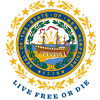Arboviral Illness Task Force
Information and resources regarding the Arboviral Illness Task Force, established and charged with reviewing current knowledge and addressing future needs of mosquito-borne disease ecology, prevention, and control in New Hampshire.
Per Chapter 73, Laws of 2008, the Arboviral Illness Task Force was established and charged with reviewing current knowledge and addressing future needs of mosquito-borne disease ecology, prevention, and control in New Hampshire so that accurate and timely information can be used to guide personal, local, and state responses to these diseases. The Arboviral Illness Task Force builds on the efforts of the Arbovirus Task Force that met in 2006 and 2007.
In 2006, the Arboviral Task Force (ATF) was established for the purpose of facilitating a coordinated local, regional, and state response to arboviruses in New Hampshire. Task Force membership and duties were defined through legislation (Chapter 284, Laws of 2006). ATF members were tasked with addressing nine subject areas (see below). The ATF began meeting in July 2006 and in accordance with legislation produced an interim report on November 1, 2006 and a final report on November 1, 2007. These reports contain background information, findings, and recommendations pertaining to each of the assigned subject areas.
The subject areas are:
- Determine the coordination of and planning for mosquito control efforts, including a method to enable communities throughout the state to form mosquito control districts, or to be able to join together informally to file joint applications to engage in larvacide or adulticide spraying.
- Determine who should have certain mosquito control responsibilities according to expertise throughout the state.
- Review and, if necessary, streamline state governmental processes required to implement mosquito control programs.
- Plan and coordinate public education and outreach regarding mosquito-borne illness.
- Apply for funding from private and public sources for the purposes of responding to arbovirus threats.
- Determine a method to enable communities to order the removal of standing water hazards on private property and to levy fines on the property owner if necessary.
- Establish a mechanism to work with landowners for determining when a pond, marsh land, or wetland on private property is found to be creating a standing water hazard and a method to permit local communities to receive assistance from the fish and game department and the department of environmental services to determine if the standing water hazard can be removed.
- Establish procedures for determining what, if any, mosquito control efforts will be undertaken in state parks.
- Establish a mechanism to protect certified organic farms from being treated with products that would void their certification.
- Public Notice-Arboviral Illness Task Force (March 25, 2024)
- Meeting Minutes
- Final Report



